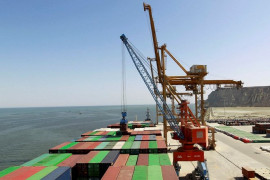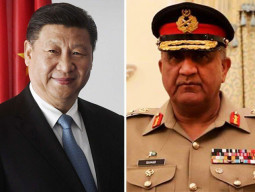
The development under CPEC is happening at three levels. The first level involves connecting Xinjiang to Gwadar and Karachi through eastern and western corridors. The more viable eastern corridor has already been developed mostly through Chinese assistance, but the western corridor remains largely ignored.
The second level is about Chinese infrastructure investment in various sectors, such as, railways, power generation, mass transit, Gwadar port, etc. Power generation in particular received significant investment during the last government’s tenure, while ML-I railway line also seems to be high on Chinese investors’ radar. But, within the power sector our transmission and distribution network has been failing to keep pace with increased power generation.
From Pakistani perspective, therefore, the two areas where we should specially welcome Saudi investment are the western CPEC corridor and the transmission and distribution network, besides their preferred sectors.
The third level of CPEC is about capitalising on infrastructure improvement through nine priority special economic zones (SEZs), planned to attract foreign companies to relocate to Pakistan to revitalise the country’s industrial base. The real benefit of CPEC will only accrue if private corporations start investing in the SEZs, with their industries contributing to employment generation and export enhancement. These planned SEZs however are not exclusively for Chinese companies and in effect this area has always been open to Saudi Arabia and other countries.
Unfortunately, however, this has been the most poorly performing area under CPEC. The focus of the government has been and still is on building the SEZ infrastructure and devising some investment and tax incentives, which is not the real problem. More than infrastructure, Pakistan’s challenge has been cumbersome business processes, rent seeking regulators, poor contract enforcement, and unpredictable policies. Unless these issues are resolved within these SEZs, they are not likely to be the phenomenal success that has been pitched to the Pakistani public. The new government has indicated to focus on this area, but so far no firm plans have been made public in this regard.
Then comes the issue of procurement. The CPEC projects were not contracted out under PPRA regulations and were rather subjected to a limited tender, supported by the Chinese National Development & Reform Commission, open only to Chinese contractors. Although open tenders are supposed to be more competitive, it is not uncommon to follow different procurement modalities in bilateral projects. But with Saudi investment, this question would also need to be re-examined. Ideally, the tenders should not be limited to Saudi and Chinese companies, if Pakistan is serious about making CPEC more inclusive and bringing other countries on board.
Lastly, the issue of debt sustainability is also important. The previous government was criticised by many on the grounds of increase in the debt-to-GDP ratio. Is Saudi assistance likely to further increase the debt burden on Pakistan? Even equity investment in oil refinery may need some off-take or capacity guarantees that may create direct or contingent liabilities for the government.
The government, therefore, needs to think through these issues carefully before finalising the deal for Saudi investment in CPEC.
Published in The Express Tribune, October 2nd, 2018.
Like Opinion & Editorial on Facebook, follow @ETOpEd on Twitter to receive all updates on all our daily pieces.










































COMMENTS (1)
Comments are moderated and generally will be posted if they are on-topic and not abusive.
For more information, please see our Comments FAQ